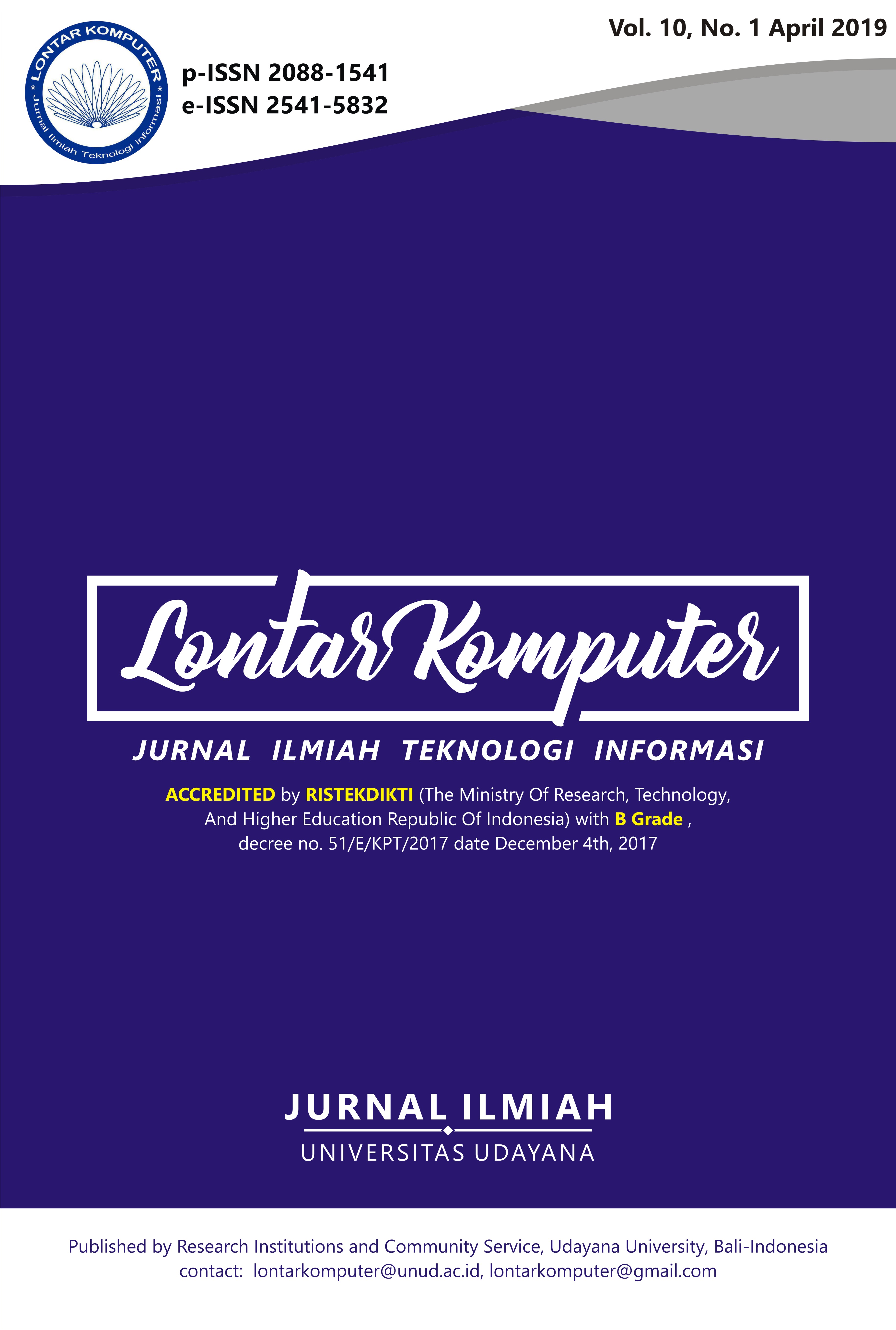Identifying Requirements Association Based on Class Diagram Using Semantic Similarity
Abstract
RRequirements association depicts inter-relation between two or more requirements within a software project. It provides necessary information for developers during decision-making processes, such as change management, development milestones, bug prediction, cost estimation, and work breakdown structure generation. Modeling association between requirements became a focus of software requirements researchers. Previous studies indicate that requirements association was pre-defined by requirements engineer based on their expert judgments. The judgments require knowledge on requirements and their class realizations. This paper introduces a method to generate a mapping between a set of requirement statements and a set of classes of a given project that realized the respected requirements. The method also generates associations among requirements based on information on associations between classes and the class-requirement mapping. The method utilizes element of relational information resided in a class diagram of respected project. A semantic similarity method was used to define the requirements with their realization classes. A class is considered realizing a requirement if and only if their semantic similarity is higher than a certain threshold. A set of experimentation on four different projects was conducted. The result of the approach was compared with the output produced by human annotators using kappa statistics. The approach is considered as having a fair agreement level (i.e. with kappa value 0.37) with the human annotators to identify and model requirement associations.
Downloads
References
[2] M. Widiastuti and D. Siahaan, “Mapping the Impact of Requirement Changes Using (LT-RC),” in 4th International Conference Information & Communication Technology and System, 2008, pp. 315–319.
[3] K. Müller and B. Rumpe, “A Model-Based Approach to Impact Analysis Using Model Differencing,” Proceedings of the 8th International Workshop on Software Quality and Maintainability., 2014.
[4] A. G. Dahlstedt and A. Persson, “Requirements Interdependencies : State of the Art and Future Challenges,” Engineering and Managing Software Requirements, pp. 95–116, 2005.
[5] W. Chen, M. Zhang, and H. Li, “Utilizing Dependency Language Models for Graph-based Dependency Parsing Models,” Proc. 50th Annu. Meet. Assoc. Comput. Linguist. (Volume 1 Long Pap., no. July, pp. 213–222, 2012.
[6] M. P. Robillard and G. C. Murphy, “Concern graphs,” Proceedings of the 24th International Conference on Software Engineering, p. 406, 2002.
[7] M. De Marneffe and C. D. Manning, “Stanford typed dependencies manual,” 20090110 Httpnlp Stanford, vol. 40, no. September, pp. 1–22, 2010.
[8] W. Wei Zhang, H. Hong Mei, and H. Haiyan Zhao, “A feature-oriented approach to modeling requirements dependencies,” in 13th IEEE International Conference on Requirements Engineering (RE’05), 2005, pp. 273–282.
[9] J. Wang and Q. Wang, “Analyzing and predicting software integration bugs using network analysis on requirements dependency network,” Requirement Engineering, 2016.
[10] A. B. Manik and D. O. Siahaan, “Rancang Bangun Kakas Bantu Deteksi Ketidaksesuaian Kode Sumber terhadap Diagram Urutan,” Jurnal Teknik ITS, vol. 7, no. 1, pp. 23–26, Mar. 2018.
[11] D. Siahaan, Y. Desnelita, Gustientiedina, and Sunarti, “Structural and semantic similarity measurement of UML sequence diagrams,” in 2017 11th International Conference on Information & Communication Technology and System (ICTS), 2017, pp. 227–234.
[12] A. M. Yuwantoko, S. Daniel, and A. S. Ahmadiyah, “Pembuatan Kakas Bantu untuk Mendeteksi Ketidaksesuaian Diagram Urutan (Sequence Diagram) dengan Diagram Kasus Penggunaan (Use Case Diagram),” Jurnal Teknik ITS, vol. 6, no. 1, pp. 64–70, Feb. 2017.
[13] F. B. Permana and D. O. Siahaan, “Pendekatan Kesamaan Semantik dan Struktur dalam Kasus Penggunaan untuk Mendapatkan Kembali Spesifikasi Kebutuhan Perangkat Lunak,” Journal of Information Systems Engineering and Bussiness Inteligence, vol. 2, no. 2, p. 57, Oct. 2016.
[14] P. Gelu, R. Sarno, and D. Siahaan, “Requirements Association Extraction based on Use Cases Diagram,” Lontar Komputer: Jurnal Ilmiah Teknologi Informasi, vol. 9, no. 1, pp. 11–19, May 2018.
[15] M. A.-R. Al-Khiaty and M. Ahmed, “Similarity assessment of UML class diagrams using a greedy algorithm,” in 2014 International Computer Science and Engineering Conference (ICSEC), 2014.
[16] D. Hernawati, “Generating Requirement Dependency Graph Based on Class Dependency,” IPTEK The Journal of Technology and Science., 2018.
[17] Å. G. Dahlstedt, “Requirements Interdependencies – a Research Framework,” no. July, 2001
The Authors submitting a manuscript do so on the understanding that if accepted for publication, the copyright of the article shall be assigned to Jurnal Lontar Komputer as the publisher of the journal. Copyright encompasses exclusive rights to reproduce and deliver the article in all forms and media, as well as translations. The reproduction of any part of this journal (printed or online) will be allowed only with written permission from Jurnal Lontar Komputer. The Editorial Board of Jurnal Lontar Komputer makes every effort to ensure that no wrong or misleading data, opinions, or statements be published in the journal.
 This work is licensed under a Creative Commons Attribution 4.0 International License.
This work is licensed under a Creative Commons Attribution 4.0 International License.























